- Home›
- Healthy Living›
- 10 Best Strength Training Exercises To Do Every Day
10 Best Strength Training Exercises To Do Every Day
By: Priyanka Maheshwari Sat, 30 Sept 2023 10:16:11
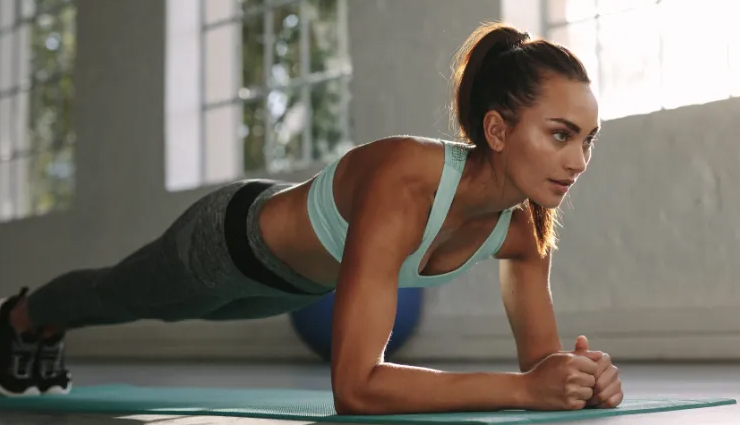
Strength training is the cornerstone of a well-rounded fitness routine, and its benefits extend far beyond just building muscles. Incorporating the right strength training exercises into your daily regimen can lead to increased strength, enhanced metabolism, improved posture, and even better overall well-being. While it's essential to vary your workouts to prevent overuse injuries and stimulate muscle growth, there are certain exercises that deserve a place in your daily fitness routine. In this article, we will introduce you to the best strength training exercises that you can do every day to help you achieve your fitness goals and transform your body. Whether you're a seasoned fitness enthusiast or just starting your fitness journey, these exercises are accessible, effective, and adaptable to suit your needs. So, let's dive in and discover the key exercises that can unlock your physical potential and elevate your fitness game.
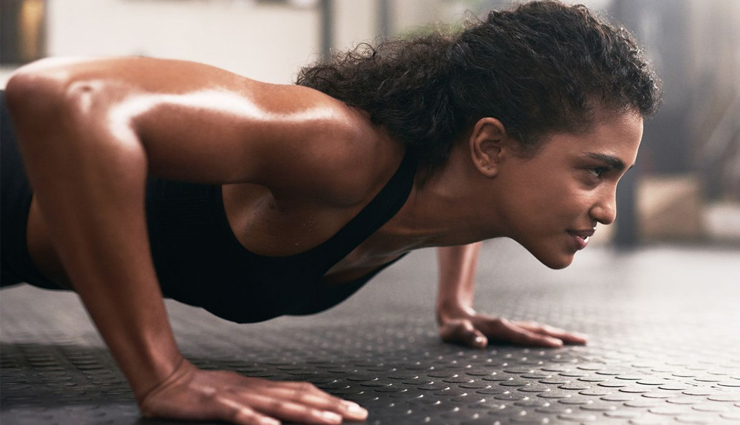
# Push-Ups
Push-ups are a versatile and effective strength training exercise that targets multiple muscle groups in the upper body, including the chest, shoulders, and triceps. Incorporating push-ups into your daily routine offers various benefits, such as increased strength, improved posture, enhanced stability, and calorie burn. Push-ups are adaptable to different fitness levels, with options like knee push-ups for beginners and advanced variations like one-arm push-ups for experienced practitioners.
Steps:
- Start in a plank position with your hands placed slightly wider than shoulder-width apart on the ground.
- Your body should form a straight line from your head to your heels. Engage your core and glutes to maintain this alignment.
- Your feet should be together, and your toes should be in contact with the ground.
- Lower your body toward the ground by bending your elbows. Keep your body in a straight line throughout the movement.
- Lower yourself until your chest almost touches the ground. Ensure that your elbows are at approximately a 45-degree angle to your body, not flaring out too wide.
- Push back up to the starting position by straightening your arms. Fully extend your elbows, but do not lock them.
- Exhale as you push up and return to the plank position.
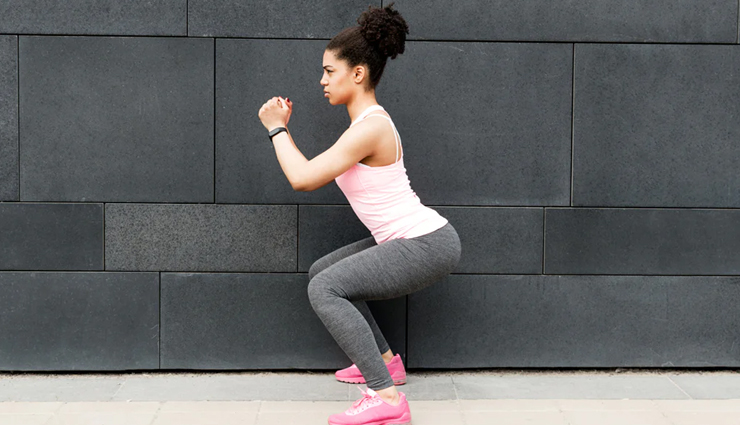
# Squats
Squats are a fundamental strength training exercise that targets the muscles in your thighs, hips, and glutes. They are incredibly versatile and can be adapted for various fitness levels and goals. Squats not only build lower body strength but also improve overall stability, balance, and functional mobility. Incorporating squats into your daily routine can enhance your leg strength and contribute to better athletic performance and everyday movements.
Steps:
- Stand with your feet shoulder-width apart. Your toes should be slightly turned out.
- Keep your chest up, shoulders back, and your gaze straight ahead.
- Initiate the squat by pushing your hips back as if you are sitting into a chair. Imagine keeping your weight on your heels.
- Lower your body by bending your knees, keeping them in line with your toes. Lower yourself as if you're trying to sit down.
- Keep your back straight and chest up. Avoid rounding your back.
- Lower yourself until your thighs are parallel to the ground or as far as your flexibility allows. Your knees should not go beyond your toes.
- Ideally, aim for a 90-degree angle at your knees, ensuring proper form and maximizing the effectiveness of the exercise.
- Push through your heels, engaging your quadriceps, hamstrings, and glutes, to return to the starting position.
- Keep your back straight as you stand up. Exhale as you rise back to the starting position.
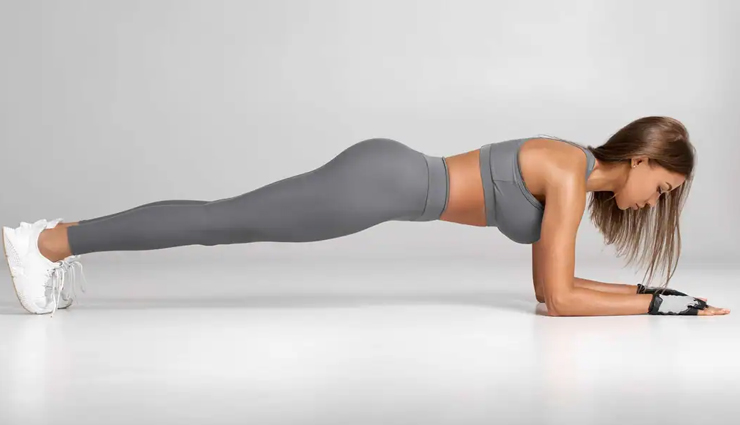
# Planks
Planks are a highly effective isometric exercise that targets the core muscles, including the abs, obliques, and lower back. This static exercise is renowned for building core strength, stability, and endurance. Planks are versatile and can be modified to suit different fitness levels. By incorporating planks into your daily routine, you can enhance your posture, reduce the risk of back pain, and improve overall body stability.
Steps:
- Begin in a push-up position with your hands placed directly under your shoulders. Your body should form a straight line from head to heels.
- Engage your core muscles, glutes, and quads to maintain a straight and rigid body position.
- Hold the position, keeping your body as straight as possible.
- Avoid sagging your hips or arching your back. Your body should remain in a straight line.
- Focus on breathing steadily. Inhale and exhale slowly and deeply.
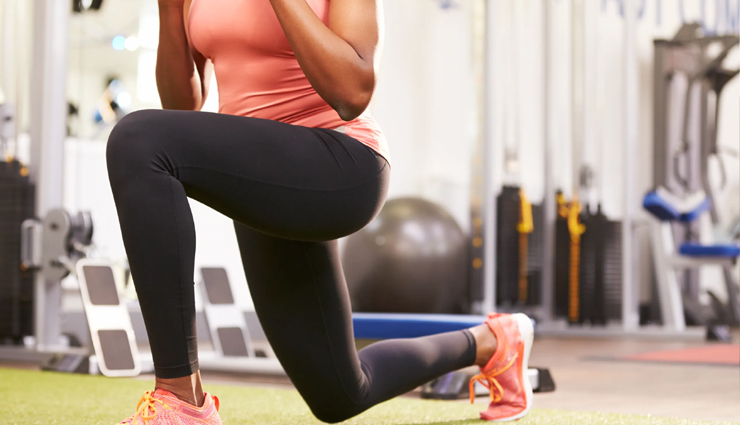
# Lunges
Lunges are a highly effective lower body exercise that targets the quadriceps, hamstrings, glutes, and calves. They not only strengthen these muscles but also improve balance and stability. Lunges are versatile and can be customized with various styles and variations, making them suitable for different fitness levels. By incorporating lunges into your daily routine, you can enhance your lower body strength, increase flexibility, and work towards achieving better overall body composition.
Steps:
- Stand with your feet hip-width apart. Keep your back straight, shoulders relaxed, and chin up.
- Take a step forward with your right foot. Your left foot should stay in place.
- Lower your body toward the ground, bending both knees. Aim to lower your back knee until it is just above the ground or lightly touches it. Your front thigh should be parallel to the ground.
- Ensure your front knee is directly above your ankle, not extending past it.
- Push through your front heel to rise back up to the starting position.
- Repeat the movement on the other leg by stepping forward with your left foot.
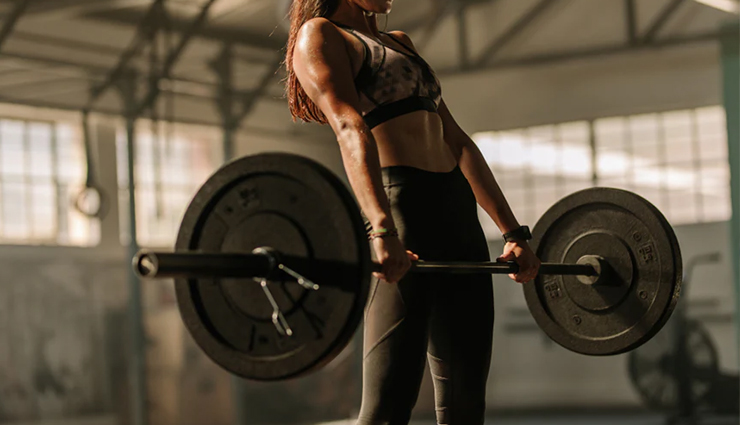
# Deadlifts
Deadlifts are a fundamental strength training exercise that targets multiple muscle groups, including the back, glutes, hamstrings, and core. This compound movement not only builds strength but also enhances overall stability and power. Deadlifts are incredibly versatile and can be adapted to various fitness levels, making them a valuable addition to any strength training regimen. Regular incorporation of deadlifts into your workout routine can lead to improved muscle definition, increased functional strength, and enhanced posture.
Steps:
- Stand with your feet hip-width apart and a barbell in front of you. Your toes should be under the bar.
- Bend your knees and lower your body, keeping your back straight, to grip the bar with an overhand grip. Your hands should also be slightly wider than shoulder-width apart.
- Keep your chest up, shoulders back, and spine in a neutral position.
- Push through your heels, engage your core, and straighten your hips and knees simultaneously to lift the bar off the ground.
- As you lift, keep the bar close to your body, maintaining a straight back and a flat, braced core.
- Stand up tall with the barbell in your hands, maintaining a straight posture and a tight core.
- At the top of the movement, your body should be fully extended, and your shoulders should be pulled back.
- Lower the barbell back to the ground with controlled movements. Bend your knees and hips simultaneously while keeping your back straight.
- The bar should touch the ground before you begin the next repetition.
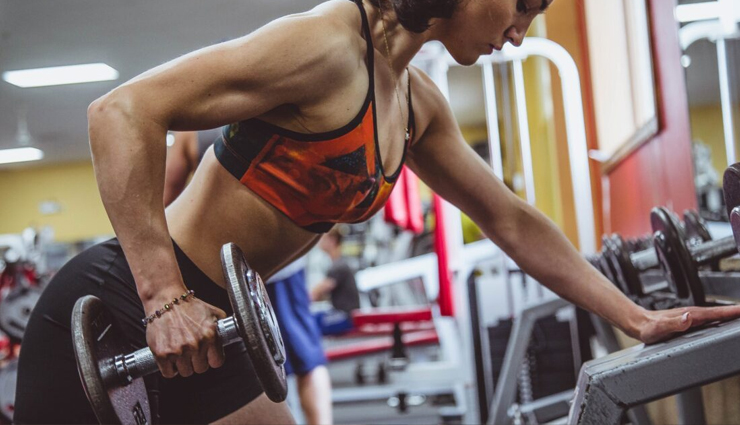
# Dumbbell Rows
Dumbbell rows are a key strength training exercise that targets the muscles of the upper back, including the latissimus dorsi, rhomboids, and trapezius. This exercise also engages the biceps and forearms, making it a versatile choice for building upper body strength and improving posture. Dumbbell rows are effective for targeting specific muscle groups and can be adapted to different fitness levels, making them valuable for anyone looking to develop a strong and well-defined back.
Steps:
- Stand with your feet shoulder-width apart, holding a dumbbell in each hand. Your palms should be facing your torso.
- Bend your knees slightly and hinge forward at your hips, keeping your back flat and chest up. Your torso should be almost parallel to the ground.
- Let the dumbbells hang straight down toward the floor, arms fully extended.
- Keeping your upper body stationary, exhale and lift the dumbbells to the sides of your torso, keeping your elbows close to your body. Focus on squeezing your shoulder blades together at the top of the movement.
- Hold the contracted position for a brief pause as you squeeze your back muscles.
- Inhale and slowly lower the dumbbells back to the starting position, fully extending your arms.
- Repeat for the recommended amount of repetitions.
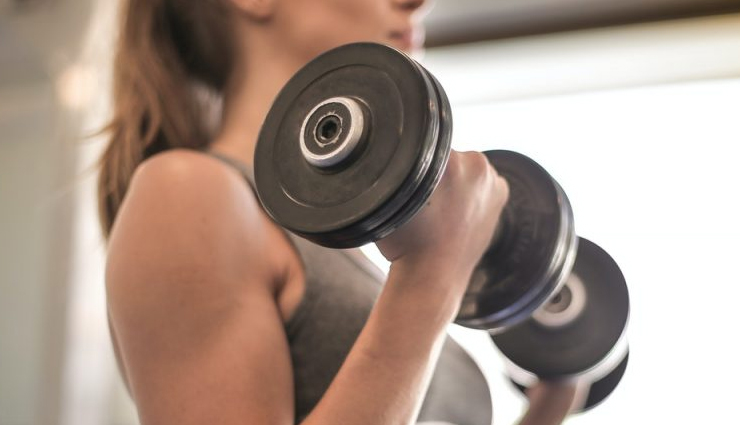
# Bicep Curls
Bicep curls are a classic and effective strength training exercise that primarily targets the biceps, the muscles on the front of your upper arms. This isolation exercise is popular for building arm strength and enhancing the aesthetic appeal of the arms. By incorporating bicep curls into your workout routine, you can sculpt well-defined and strong biceps, improving both functional and aesthetic aspects of your upper body.
Steps:
- Stand with your feet shoulder-width apart, holding a dumbbell in each hand. Your palms should be facing forward, and your arms should be fully extended, hanging naturally by your sides.
- Keeping your upper arms stationary, exhale and curl the weights while contracting your biceps. Continue to raise the dumbbells until your biceps are fully contracted and the dumbbells are at shoulder level.
- Hold the contracted position for a brief pause, squeezing your biceps.
- Inhale and slowly begin to lower the dumbbells back to the starting position, fully extending your arms.
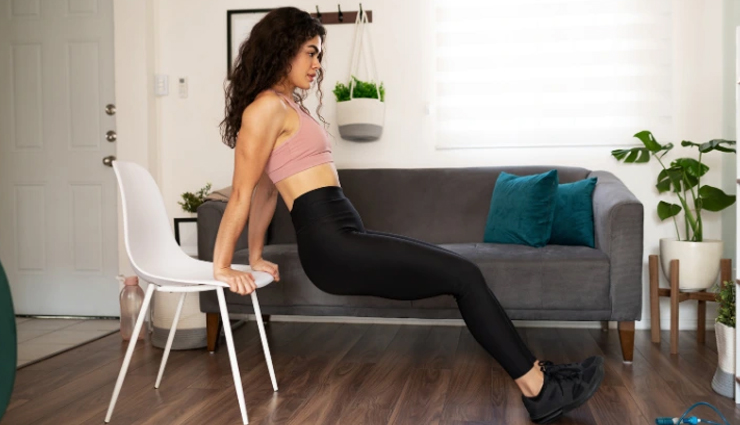
# Tricep Dips
Tricep dips are a highly effective bodyweight exercise targeting the triceps, the muscles located on the back of the upper arms. This exercise helps tone and strengthen the triceps, contributing to improved arm definition. Tricep dips are versatile, requiring minimal equipment, and can be performed almost anywhere. By incorporating tricep dips into your fitness routine, you can enhance the appearance of your arms and increase upper body strength.
Steps:
- Sit on a stable bench or chair with your hands placed shoulder-width apart on the edge of the bench.
- Extend your legs out in front of you, keeping your heels on the ground. Your fingers should be pointing towards your feet.
- Lower your body by bending your elbows. Keep your back close to the bench, and lower yourself until your upper arms are parallel to the ground. Your forearms should be perpendicular to the floor.
- Push through your palms and straighten your arms to lift your body back to the starting position.
- Fully extend your elbows without locking them at the top of the movement.
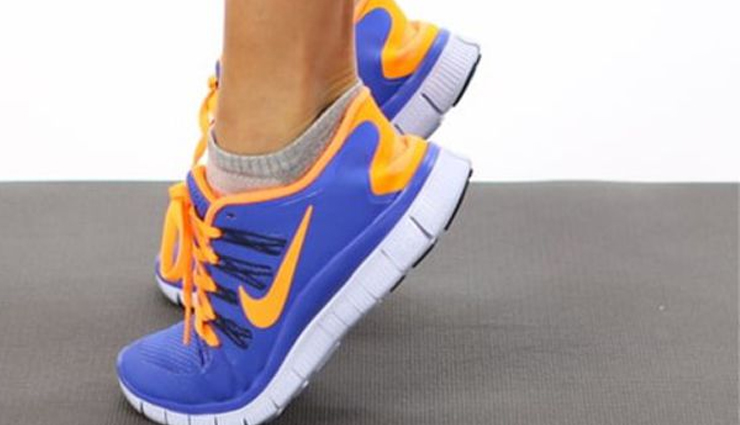
# Calf Raises
Calf raises are a simple yet effective strength training exercise that targets the calf muscles, specifically the gastrocnemius and soleus muscles, located in the lower part of the leg. This exercise helps to strengthen and tone the calves, enhancing overall leg definition. Calf raises are easy to perform and can be done virtually anywhere, making them a convenient addition to any fitness routine. Regular practice of calf raises can lead to improved calf strength, stability, and better overall lower body aesthetics.
Steps:
- Stand with your feet hip-width apart and flat on the ground.
Keep your back straight, shoulders relaxed, and head in a neutral position.
- Slowly rise onto the balls of both feet, lifting your heels as high as possible.
- Balance on the balls of your feet for a moment, feeling the stretch in your calf muscles.
- Lower your heels back down below the level of the step, feeling a slight stretch in your calves.
- Do not allow your heels to touch the ground; maintain tension in the calf muscles.
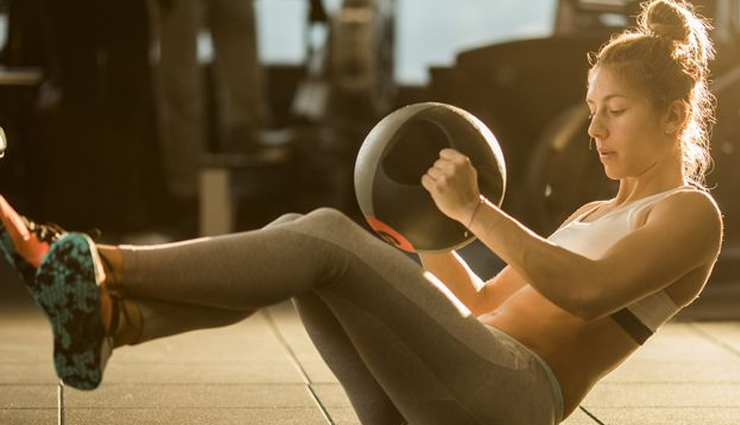
# Russian Twists
Russian twists are a dynamic core exercise that targets the oblique muscles, promoting trunk rotation and strengthening the sides of the abdomen. This exercise enhances core stability and improves rotational flexibility. Russian twists are versatile and can be adapted to various fitness levels, making them valuable for anyone aiming to enhance their core strength and achieve a more defined waistline. Incorporating Russian twists into your workout routine can contribute to better overall posture and functional movement.
Steps:
- Sit on the ground with your knees bent and feet flat on the floor.
- Lean back slightly, keeping your back straight, and engage your core muscles for stability.
- Hold a weight or medicine ball with both hands, close to your chest.
- Lift your feet a few inches off the ground, balancing on your sit bones.
- Slowly twist your torso to the right, bringing the weight toward the ground beside your hip. Your gaze should follow the weight.
- Pause for a moment, feeling the contraction in your obliques.
- Engage your core muscles and twist your torso to the left, bringing the weight toward the ground beside your left hip.
- Pause and contract your obliques before returning to the center.





